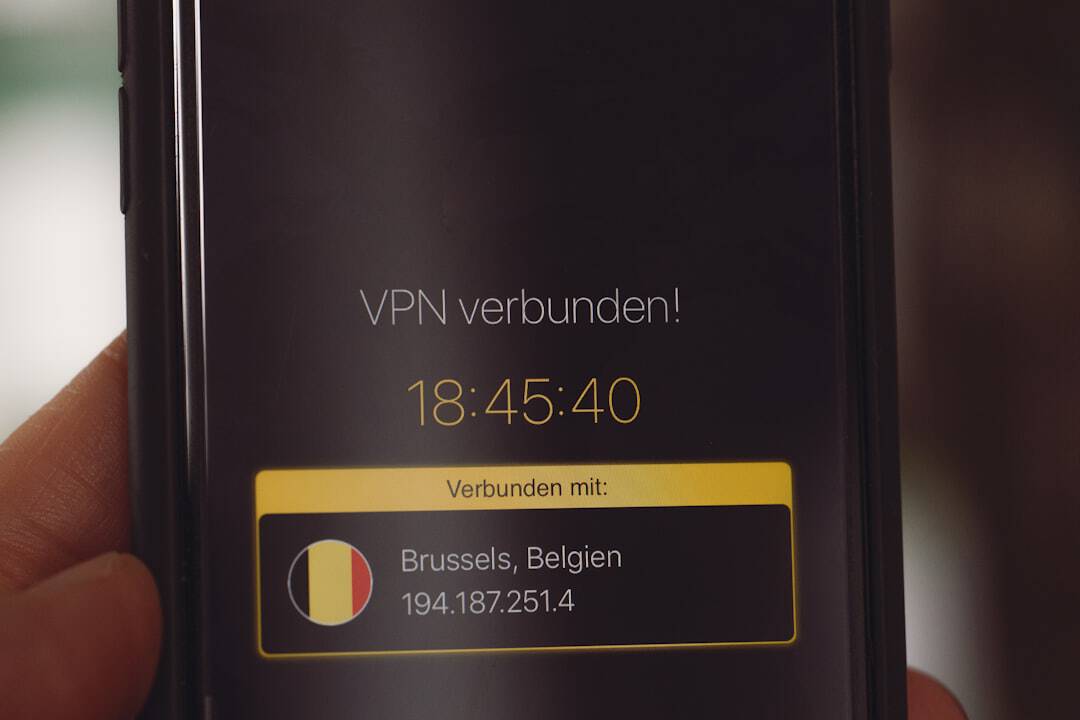Zero Trust Network Access (ZTNA) is a security framework that addresses the shortcomings of traditional network security approaches. Unlike conventional models that rely on perimeter defenses, ZTNA assumes that threats can originate from both internal and external sources. This model prioritizes the verification of user and device identities before granting access to applications and resources, thereby reducing the risk of unauthorized access and lateral movement within the network.
ZTNA implements the principle of least privilege, which restricts user access to only the specific resources necessary for their job functions. This approach minimizes the attack surface and limits the potential impact of security breaches. Furthermore, ZTNA utilizes micro-segmentation to create isolated network segments, providing an additional layer of containment for potential threats.
By adopting ZTNA, organizations can strengthen their overall security posture and more effectively protect their sensitive data and critical assets.
Key Takeaways
- Zero Trust Network Access (ZTNA) is a security model that requires strict identity verification for every person and device trying to access resources on a private network, regardless of whether they are inside or outside the network perimeter.
- Prisma ZTNA offers benefits such as improved security, simplified access management, reduced attack surface, and enhanced user experience.
- Implementing Prisma ZTNA in your organization involves assessing your current network architecture, identifying access requirements, and deploying the ZTNA solution with minimal disruption to existing operations.
- Prisma ZTNA enhances security by providing granular access controls, continuous monitoring of user and device behavior, and encryption of data in transit.
- Overcoming challenges with Prisma ZTNA requires addressing concerns about user experience, ensuring compatibility with legacy systems, and providing adequate training for IT staff and end users.
- Integrating Prisma ZTNA with existing security measures involves aligning access policies, integrating with identity and access management solutions, and leveraging threat intelligence for proactive defense.
- Future developments in ZTNA technology may include advancements in user authentication methods, integration with cloud-native architectures, and automation of access policy management.
The Benefits of Prisma ZTNA
Prisma ZTNA offers several key benefits for organizations looking to enhance their security posture. Firstly, Prisma ZTNA provides granular access control, allowing organizations to enforce strict access policies based on user identity, device posture, and other contextual factors. This helps to prevent unauthorized access and reduce the risk of insider threats.
Additionally, Prisma ZTNA supports secure remote access, enabling employees to connect to corporate resources from any location without compromising security. Furthermore, Prisma ZTNA simplifies the management of access policies through a centralized console, making it easier for organizations to enforce consistent security measures across their entire network. This not only improves security but also reduces the administrative burden on IT teams.
Prisma ZTNA also offers visibility and analytics capabilities, allowing organizations to gain insights into user behavior and network traffic, which can help identify potential security risks and compliance issues.
Implementing Prisma ZTNA in Your Organization

Implementing Prisma ZTNA in your organization involves several key steps. Firstly, it is important to conduct a thorough assessment of your existing network infrastructure and security policies to identify any gaps or weaknesses that need to be addressed. This will help ensure that Prisma ZTNA is implemented in a way that aligns with your organization’s specific security requirements.
Next, you will need to define access policies based on the principle of least privilege, taking into account user roles, device posture, and other contextual factors. These policies should be designed to restrict access to sensitive resources and applications based on the specific needs of each user or group. Once the access policies have been defined, you can then configure Prisma ZTNA to enforce these policies and manage access control across your network.
It is also important to provide training and support for employees who will be using Prisma ZTNA to ensure they understand how to securely access corporate resources and comply with the new security measures. Additionally, regular monitoring and auditing of access logs and user activity will be essential to ensure that Prisma ZTNA is effectively protecting your organization’s network.
How Prisma ZTNA Enhances Security
| Security Enhancement | Metrics |
|---|---|
| Zero Trust Architecture | Reduces the attack surface by authenticating and authorizing every device attempting to connect to a network |
| Micro-Segmentation | Provides granular control over network traffic, limiting the lateral movement of threats |
| Continuous Monitoring | Offers real-time visibility into network traffic and user behavior for threat detection and response |
| Secure Access | Enables secure access to applications and resources regardless of user location |
Prisma ZTNA enhances security in several ways. Firstly, by implementing granular access control based on user identity and device posture, Prisma ZTNA helps to prevent unauthorized access and reduce the risk of insider threats. This ensures that only authorized users with compliant devices can access sensitive resources, minimizing the potential for data breaches or unauthorized activity.
Additionally, Prisma ZTNA supports secure remote access, allowing employees to connect to corporate resources from any location without compromising security. This is particularly important in today’s increasingly remote work environment, where employees need to access corporate resources from a variety of devices and locations. By providing secure remote access, Prisma ZTNA helps organizations maintain a strong security posture while enabling flexible work arrangements.
Furthermore, Prisma ZTNA offers visibility and analytics capabilities, allowing organizations to gain insights into user behavior and network traffic. This visibility can help identify potential security risks and compliance issues, enabling organizations to proactively address any vulnerabilities or threats. By providing this level of visibility and control, Prisma ZTNA helps organizations better protect their sensitive data and critical assets.
Overcoming Challenges with Prisma ZTNA
While implementing Prisma ZTNA can offer significant security benefits, there are also challenges that organizations may face during the implementation process. One common challenge is ensuring that access policies are properly configured to align with the organization’s specific security requirements. This may require a thorough assessment of existing network infrastructure and security policies to identify any gaps or weaknesses that need to be addressed.
Another challenge is providing training and support for employees who will be using Prisma ZTNIt is important to ensure that employees understand how to securely access corporate resources and comply with the new security measures. This may require ongoing education and communication efforts to ensure that employees are aware of the changes and understand how to use Prisma ZTNA effectively. Additionally, organizations may face challenges related to monitoring and auditing access logs and user activity.
It is important to establish processes for regularly monitoring and auditing access logs to ensure that Prisma ZTNA is effectively protecting the organization’s network. This may require dedicated resources and tools for analyzing user behavior and network traffic to identify potential security risks and compliance issues.
Integrating Prisma ZTNA with Existing Security Measures

Integrating Prisma ZTNA with existing security measures is essential for ensuring comprehensive protection across the organization’s network. One key aspect of integration is aligning access policies with existing security policies to ensure consistency and minimize potential conflicts. This may require collaboration between different teams within the organization, such as IT, security, and compliance, to ensure that access policies are aligned with broader security objectives.
Another aspect of integration is ensuring that Prisma ZTNA works seamlessly with other security technologies and solutions that are already in place within the organization. This may involve integrating Prisma ZTNA with identity management systems, endpoint security solutions, and other tools to provide a layered approach to security. By integrating these technologies, organizations can create a more robust security posture that addresses a wide range of potential threats.
Furthermore, organizations should consider how Prisma ZTNA can complement existing security measures by providing additional visibility and control over user behavior and network traffic. By integrating Prisma ZTNA with existing security measures, organizations can gain a more comprehensive view of their network environment and better protect their sensitive data and critical assets.
Future Developments in ZTNA Technology
Looking ahead, there are several future developments in ZTNA technology that are likely to shape the evolution of network security. One key development is the continued integration of artificial intelligence (AI) and machine learning (ML) capabilities into ZTNA solutions. By leveraging AI and ML, ZTNA solutions can better analyze user behavior and network traffic to identify potential security risks and anomalies in real time, enabling organizations to proactively address emerging threats.
Another future development is the expansion of ZTNA capabilities to support a wider range of devices and applications. As organizations increasingly adopt cloud-based services and embrace bring-your-own-device (BYOD) policies, ZTNA solutions will need to adapt to provide secure access to a diverse array of devices and applications. This may involve developing new protocols and standards for securing access to cloud-based resources and ensuring compatibility with a variety of devices.
Additionally, future developments in ZTNA technology are likely to focus on enhancing user experience while maintaining strong security measures. This may involve streamlining authentication processes, improving performance for remote users, and providing more intuitive interfaces for managing access control. By prioritizing user experience, organizations can encourage compliance with security measures while minimizing friction for employees accessing corporate resources.
In conclusion, Zero Trust Network Access (ZTNA) represents a significant advancement in network security that offers granular access control, secure remote access, visibility, and analytics capabilities. By implementing Prisma ZTNA in your organization, you can enhance your security posture by preventing unauthorized access, supporting secure remote access, and gaining insights into user behavior and network traffic. While there are challenges associated with implementing Prisma ZTNA, such as configuring access policies and providing training for employees, these can be overcome through careful planning and collaboration across different teams within the organization.
By integrating Prisma ZTNA with existing security measures and staying abreast of future developments in ZTNA technology, organizations can continue to strengthen their network security and protect their sensitive data and critical assets in an increasingly complex threat landscape.
Prisma Zero Trust Network Access (ZTNA) is revolutionizing the way organizations approach network security. With the rise of the metaverse industry, it’s crucial for companies to stay ahead of the curve in terms of cybersecurity. In a related article on Metaversum, “Future Trends and Innovations in the Metaverse Industry: Projections in the Metaverse,” experts discuss the potential impact of ZTNA on the metaverse and how it can enhance security within virtual environments. This article provides valuable insights into the intersection of cybersecurity and the metaverse, making it a must-read for businesses looking to navigate this rapidly evolving landscape. (source)
FAQs
What is Prisma ZTNA?
Prisma ZTNA (Zero Trust Network Access) is a cloud-delivered service that provides secure access to applications and resources for users, regardless of their location.
How does Prisma ZTNA work?
Prisma ZTNA uses a zero trust approach to verify the identity of users and devices before granting access to applications and resources. It creates a secure, encrypted connection between the user and the application, without exposing the application to the internet.
What are the benefits of using Prisma ZTNA?
Some of the benefits of using Prisma ZTNA include improved security, simplified access management, enhanced user experience, and the ability to enforce access policies based on user identity and device posture.
Is Prisma ZTNA suitable for all types of organizations?
Prisma ZTNA is designed to be suitable for organizations of all sizes and industries, including those with remote or mobile workforces, as well as those with a need for secure access to cloud-based applications and resources.
How does Prisma ZTNA differ from traditional VPN solutions?
Prisma ZTNA differs from traditional VPN solutions in that it provides a more granular and secure approach to access management, based on the principles of zero trust. It also offers a more seamless and user-friendly experience for accessing applications and resources.











Leave a Reply